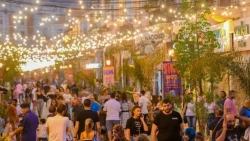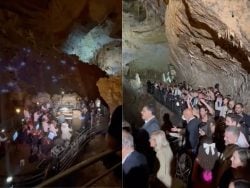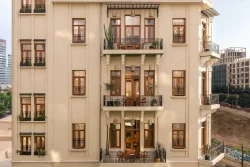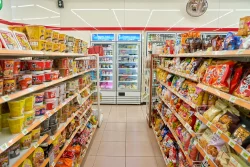Only 24 Out of 38 Beaches in Lebanon Are Safe to Swim in This Summer
We think it’s time to get serious about our beaches this summer. Whether you live in Lebanon or just visit for the season, we all dream of spending our days going from one beach to another.
Want to get the perfect tan, sip a drink by the sea, or hang out with family and friends? Sadly, your options are shrinking year after year. As of today, only 24 out of 38 beaches in Lebanon are safe to swim in.
Safe Beaches
According to the National Council for Scientific Research’s (CNRS) 2025 Report, only 24 points are considered safe for swimming this summer. That means only 63% of the monitored sites meet safety standards for recreational swimming.
These locations include:
Tripoli / South of Sports City
Anfeh / Deir Al Natour
Anfeh / Tahet El Rih area
Heri / Public Beach
Selaata / Public Beach
Batroun / Al-Bahsa Beach
Batroun / Al Hima below NCMS-CNRS-L
Amchit / Public Beach
Byblos / Al-Bahsa Public Beach
Byblos / Public Beach
Fidar / Below Fidar Bridge
Okaibeh / Nahr Ibrahim Beach
Bouar / Public Beach
Safra / Public Beach
Jounieh / Maameltein
Damour / Public Beach
Jiyeh / Private Beach
Rmeileh / Public Beach
Adloun / Public Beach
Tyre / Sandy Public Beach (TCNR)
Naqoura / Near Fishing Port
Minyeh / Public Beach
Khaldeh / Public Beach
Al Abbassieh/ Public Beach
Cautious/Unsafe Beaches
Additionally, 8 stations are classified as cautious to critical unsafe, indicating moderate bacteriological contamination and susceptibility to intermittent pollution. These stations include:
Akkar / Near Klayaat Airport
Tripoli / Abd El Wahab Beach
Beirut / Ain El Mraisseh
Saida / Public Beach
Awali / North of Awali River
Ghazieh / Public Beach
Sarafand / Public Beach
Tyre / Sandy Beach of the Restaurant Street
Extremely Polluted Beaches
However, 6 stations are classified as extremely polluted and unsafe for swimming, containing large quantities of fecal bacteria exceeding safe limits. These include:
Tripoli / Public Beach
Jounieh / Public Beach
Dbayeh / North Dbayeh Marina
Antelias / Nahr Antelias Mouth
Beirut / Manara
Beirut / Ramlet El Bayda public beach
Important note
It’s also important to mention that the National Council for Scientific Research in Lebanon monitors 38 geographical points classified as marine stations. These stations stretch from Arida in the north to Naqoura in the south. They cover public beaches, rocky shores, river mouths, some private beaches, and areas near industrial power plants (for comparison purposes).
Conclusion
Many environmentalists, scientists, and organizations have been tirelessly raising concerns about pollution and microplastics, an ongoing threat to marine life and water quality. As the years go by and our water quality continues to worsen, we’ll have fewer and fewer beaches left to enjoy. But more importantly, we need to act now, not just for ourselves, but for the preservation of Lebanon’s marine life.
Was this compilation of safe beaches around Lebanon useful? Check out our older article here for comparison.
“Made in Beirut” Tee
High quality t-shirt that is available in either round neck loose fit made of 100% cotton with short sleeves, or fitted cropped with a round neck and short sleeves (95% cotton,5% elastane).
The Beirut Mom Tee
Beirut.com printed logo on the left side, with “mom” in pink cursive below. Available in Black and White.
“Made in Beirut” Tee
High quality t-shirt that is available in either round neck loose fit made of 100% cotton with short sleeves, or fitted cropped with a round neck and short sleeves (95% cotton,5% elastane).
The Beirut Mom Tee
Beirut.com printed logo on the left side, with “mom” in pink cursive below. Available in Black and White.





